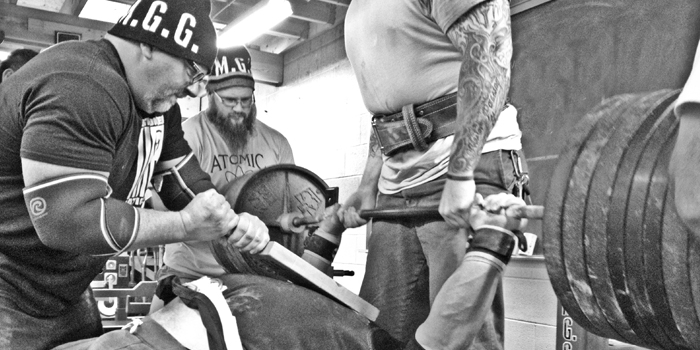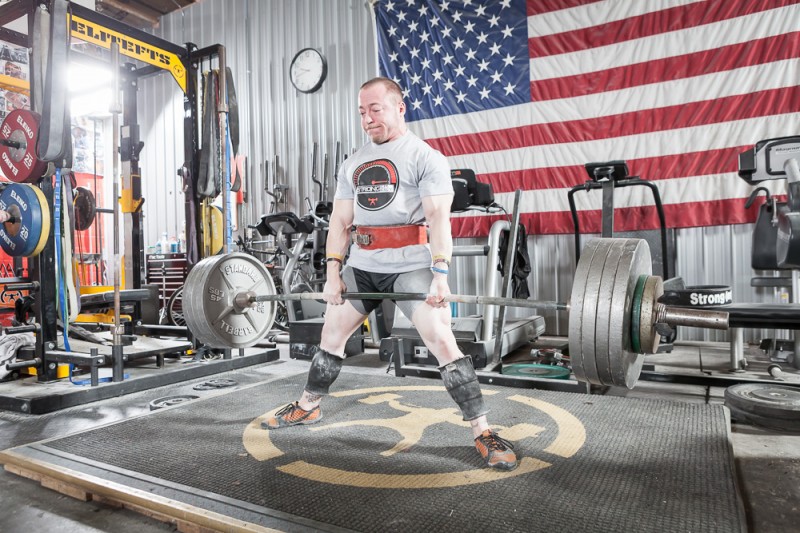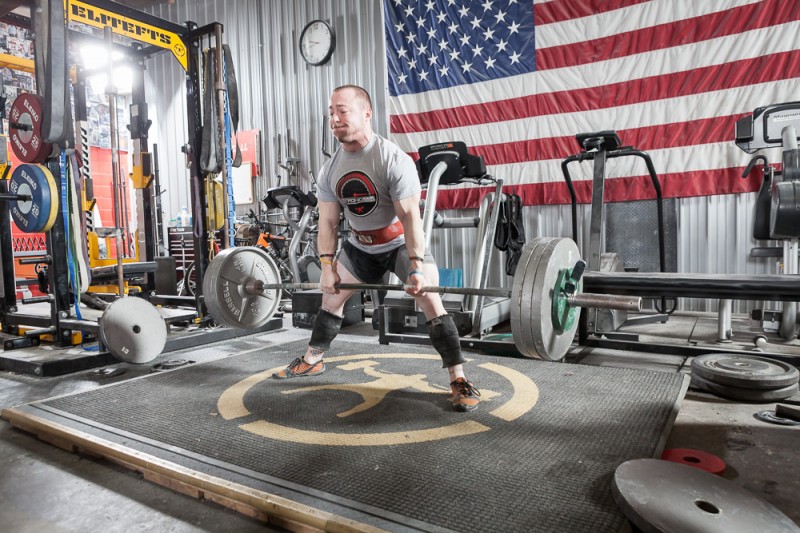
Sports fans have always wanted to see the legends do what they do best. They wanted to see the greats, like a Michael Jordan slam-dunk in a way that seemed to defy gravity. They wanted to see Mr. October, Reggie Jackson, blast one out of the park in the bottom of the ninth. They wanted to see Nolan Ryan blow a fastball right past the batter like a flash of lightning. These are the feats we want to see from our sporting heroes.
To that end, nobody wanted to see Jordan practice a free throw, nobody got to the park early to see Reggie practice his bunting, and nobody wanted to see Nolan Ryan work on his change-up.
RECENT: The '90s Called and It Wants Its Diet Back
In powerlifting, the same thing goes. Powerlifting fans want to see the squatter grind out a grand as that bar bends on their back and blood comes streaming out of the squatters' nostrils from the tremendous pressure. They prefer that over watching these squat kings focus on their form or meticulously work on the hundreds of little body mechanics that collectively add up to that perfect technique. That perfect technique, which allows for the power of that lifter to successfully move that 1,000 pounds from rack to depth, back up, and then back to the rack.
Instagram, Twitter, Facebook, and social media in general feed a lifter’s interest with the flashy over the technical, the showy over the slow and steady and the visual sound bite over the whole story. You can say to your friend, “The shark eats people,” or your friend can delve into the pages of the original book, Jaws, and when that final page has flipped over, they have grown too terrified to ever go swimming in the ocean. The details matter, the story matters, the whole picture matters, the meat on the bones matters, and in powerlifting, the eccentric portion of the lift matters.

If only I had a dollar for every time I saw some Instafamous persona slam a deadlift down, I would be writing this article from a luxury beach home in Jamaica with a little tiny umbrella in my Universal Nutrition protein shake. I have touched on this before, but it bears repeating and perhaps said in a different way, or maybe I am transforming into Don Quixote and all the slamming deadlift bars are actually windmills spinning peacefully in the wind.
Don Quixote aside, the bottom line question is when did everyone become allergic to the eccentric? The eccentric, the down, or put another way, the other, really, really, REALLY important 50 percent of the deadlift and every lift, has become as scarce as the ability to complete a workout without having to post the fact that a workout was actually completed. We get it, friend, you went to the gym today, and yesterday, and the day prior to that, and we understand. We understand because you post after each trip to the gym. What we do not, however, get the Insta-important qualifier statements, “This was my heavy set, a little high, but felt good,” or “This was my big set, I think I am good for 100 pounds more,” etc. Seriously, what is with that? Just squat to depth, and if you have the 100 pounds in you, then do it. No more Insta-excuses, thank you.
Because the attention span is short, powerlifting Insta-clips need to be eye-catching, and what is more eye-catching than showing how “awesome your pull was” by slamming that bar down to the ground? Of course, this means complete neglect of the eccentric part of the deadlift, but if the goal is more likes versus a bigger powerlifting total...
Instafamous lifters aside, what makes a great deadlift is training the deadlift, and that means training it properly, which means training the concentric as well as the eccentric part of the movement.
RELATED: Conventional or Sumo? Or Both?
For decades, research has demonstrated that the eccentric movement is stronger than the concentric, and it is that difficult aspect of the lift that requires discipline and self-control to master. It is from that work that comes exponential total power when the eccentric is completed after the concentric aspect of the lift.
For bodybuilding great Dorian Yates, the barbell curl was lifted up by his lifting partner when all concentric muscle function had been exhausted/depleted, but the eccentric portion was still functioning; it was his eccentric work bringing that weight down in a controlled manner that was one of the staples to Yates’ training that help him construct his six-time Mr. Olympia body.
In powerlifting, the eccentric portion of the deadlift was trained also in isolation at the legendary Frantz Gym (in addition to training the entire deadlift prior to this isolated movement). That eccentric work Ernie Frantz had his legendary powerlifting team do helped create one of the largest groups of 800-plus-pound deadlifters from one single gym in the history of the sport. The eccentric is of critical importance to your training and it must not be neglected. That is, if the lifter is actually serious about increasing strength and power.
When pulling that heavy deadlift, with all the explosive force required to get that bar off of the ground, it is that controlled down where the bar kisses the platform versus being dropped onto the platform that builds the erectors and sharpens the tools required to get that bar moving off the platform in the first place.

In general, the eccentric portion of the lift, regardless of the type of exercise, causes a greater amount of desired muscular damage. It adds to your time under tension. The eccentric helps build and reinforce your connective tissue strength, as you can’t compete with a blown out tendon. It allows you to utilize heavy negatives when called for in training.
Like a broken record, you hear it said over and over again in real powerlifting gyms from successful and seasoned lifters to the newer lifter: “The louder the deadlift when it hits the platform, the more you just robbed yourself of power.” No lift starts from a dead stop like the deadlift, and no lift requires attention to the eccentric like it as well, as there is no kinetic build up of energy like there is with the squat and bench.
As an assistant principal for over two decades in my “real life” outside of the gym, I see the cycle of requisite information get redistributed over and over again to a new group of freshmen every year, and powerlifting is similar in that aspect. There is a new crop of powerlifters that pop up each and every year, and that is one reason why new elitefts articles about old issues are restated over and again in different forms as there will be that one reader out there who will heed these words and transform their training completely by giving the attention to this key component of the power game. For that reader applying this essential information will work to increase their overall power and tendon strength, it will complement exponentially their concentric work, and it will create PR after PR after PR.
WATCH: What I'm Seeing and Why It's Wrong: Fixing the Sumo Deadlift
I am all for the celebration after a big lift, but that said, work that eccentric so there is actually a deadlift poundage worth celebrating. I can assure you for every hundred Insta-famous-wannabes out there slamming their mediocre deadlift down to the ground, there is that one powerlifting killer out there. That killer is a student of the sport who is training in radio silence, working the complete lift, focusing on the entire movement, and preparing to chop down any challengers who dare stand between them and victory. That type of powerlifter is the one that you never see coming up behind you as they don’t expose or post their progress.
Rather, powerlifters cut from that cloth keep their progress under lock and key. That is until they raise their hands in victory come meet day when the deadlift actually matters. By then, it is all over for the Insta-slammer who left half of every single training pull at the gym as they were too busy slamming than training.
Bottom line is this: Train for the platform and leave the slamming to those with tiny pulls and fragile egos who are looking for attention rather than a big total. Avoid being one of the thousands of deadlift slamming sheep headed to the slaughter. Be the technician who trains the whole lift and then feast on your pick of the sheep because, at the end of the day, the sound of victory is louder than any slammed deadlift bar could ever hope to be.
Wishing you the best in your training and meet prep. Ever onward!











Great information and I hope for more to come.
Carl in Dover